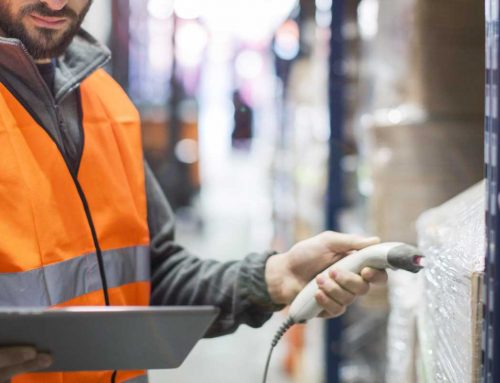If your job responsibilities include managing a warehouse or distribution facility, how can you be sure that you’re providing a safe working environment? Maybe you have a good track record when it comes to safety but that’s no reason to become complacent. Continuous vigilance and adherence to best practices are a must if you want to keep your workers safe – because warehouse safety matters.

According to Safe Work Australia, the Transport, Postal and Warehousing industry is the riskiest sector to be in, with more workplace deaths and serious injuries than any other. While it would be impossible to completely eliminate the risk of accidents and injuries in the warehouse, there are steps you should be taking to ensure that your workplace is as risk-free as possible. Here are some to start with.
Warehouses can become very busy places, with orders to fulfill and deadlines to meet. During peak times in particular warehouse safety can inadvertently slip from top spot on the priority list. But whatever else might be going on it’s important to always make sure that the right safety equipment is being used, by the right people and in the right way. A work environment that does not pay proper constant attention to this is asking for trouble, and that trouble could come in the form of a nasty injury.
Safety equipment is going to be of limited use if it’s not in proper working order. Many safety items are required to be fit for use so be sure to run routine checks to maintain compliance.
For example, are your forklifts in safe working order? Do you know whether your fire extinguishers, smoke detectors and sprinkler systems work? Do you have goggles, hard hats or other protective gear that is worn out or damaged and needs to be replaced? Is your first aid fully and properly stocked? By paying attention to these things you not only reduce the risk of workplace injury but also ensure that you’re well-placed to deal with an accident should one occur.
Often it is only when new employees join a business that workplace health and safety education is provided to workers. The problem is that, over time, rules can get forgotten and complacency amongst both managers and workers can set in. Safety training needs to be an ongoing task, provided at regular intervals to ensure that everyone is meeting the business’s safety requirements.
As well as general instruction on best safety practices, you should pay particular attention to those aspects of compliance where workers are falling short. Encourage feedback and recommendations from workers on areas where safety could be improved.
Many workplace accidents occur because workers cut corners to save time and meet deadlines. By making safety a top-of-mind issue, employees will have a higher awareness of this aspect of their job, making them more likely to avoid unnecessary risks of injury in the workplace.
If there is one message that should be emphasised during training above all others, it is that safety is everyone’s responsibility. In any workplace where there’s the potential for accident or injury, it is every employee’s responsibility to not only keep themselves safe but to do what they can to provide the safest work environment for others.
To complement your training initiatives it’s worth putting together, and handing to your workers, a document detailing your workplace safety policies and procedures. You could also put up posters or one-pagers outlining safety tips, for example the proper techniques for physical lifting, the handling of chemicals, the operation of machinery, etc.
Hazards can stealthily accrue in the warehouse without anyone noticing anything or, if something is noticed, no-one doing anything about it. Loose cords, stray boxes, liquids and other hazardous substances and materials can appear at any time, so it pays to be vigilant to these risks to workplace safety.
To minimise the potential for accidents, regularly walk-through your warehouse to ensure there’s nothing lying around that could pose a danger. Check the floor for liquids and anything else that could cause a worker to slip and fall.
The same vigilance to hazards should apply to anything above floor-level, as plenty of workplace accidents are caused by objects falling on workers. Check that loads that are stored above are properly secured. You may, for example, find that a load is secured by plastic wrap when it would best be secured using cloth or metal straps.
If your workplace uses dangerous equipment or chemicals, check to ensure that those items are stored in a separate area and that the appropriate signage and labelling are in place.
A walk-through of your warehouse can also alert you to a variety of other potential hazards. Obstructed views, poorly lit areas, cracked floors, inadequate ventilation, damaged racking systems, loose guardrails and the like can all present a danger but may remain unattended to unless someone is dedicated, on a regular basis, to checking for these types of safety risks.
Your regular safety sweep should also focus on your workers. Check to make sure they’re using the required safety equipment and are carrying out their duties in a way that’s consistent with your workplace safety guidelines and standards.
The Takeaway
Proper workplace safety practices aren’t just a moral obligation, they’re a legal requirement. And the benefits of a safe working environment extend beyond minimising the risk of injury to workers. When safety procedures are given top priority in the warehouse, productivity is improved, employee satisfaction is increased and operational delays and absenteeism are reduced.
To create as risk-free a workplace environment as possible you should be proactively doing what’s needed to foster a culture of safety, involving the input of everyone from the top down. When people work together to raise and address safety issues, and strive to prevent accidents before they occur, you’re well on your way to achieving a warehouse that is second to none in terms of health and safety.
To find out more get in touch with us today on (+61) 2 9648 3323 or email us at info@jiwatraining.com. You can also Read More Blogs.






